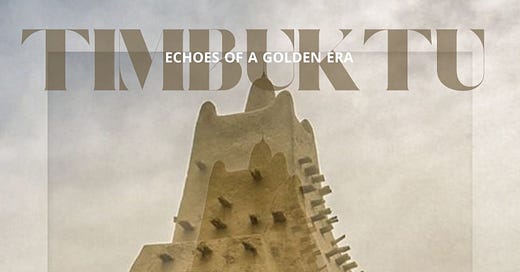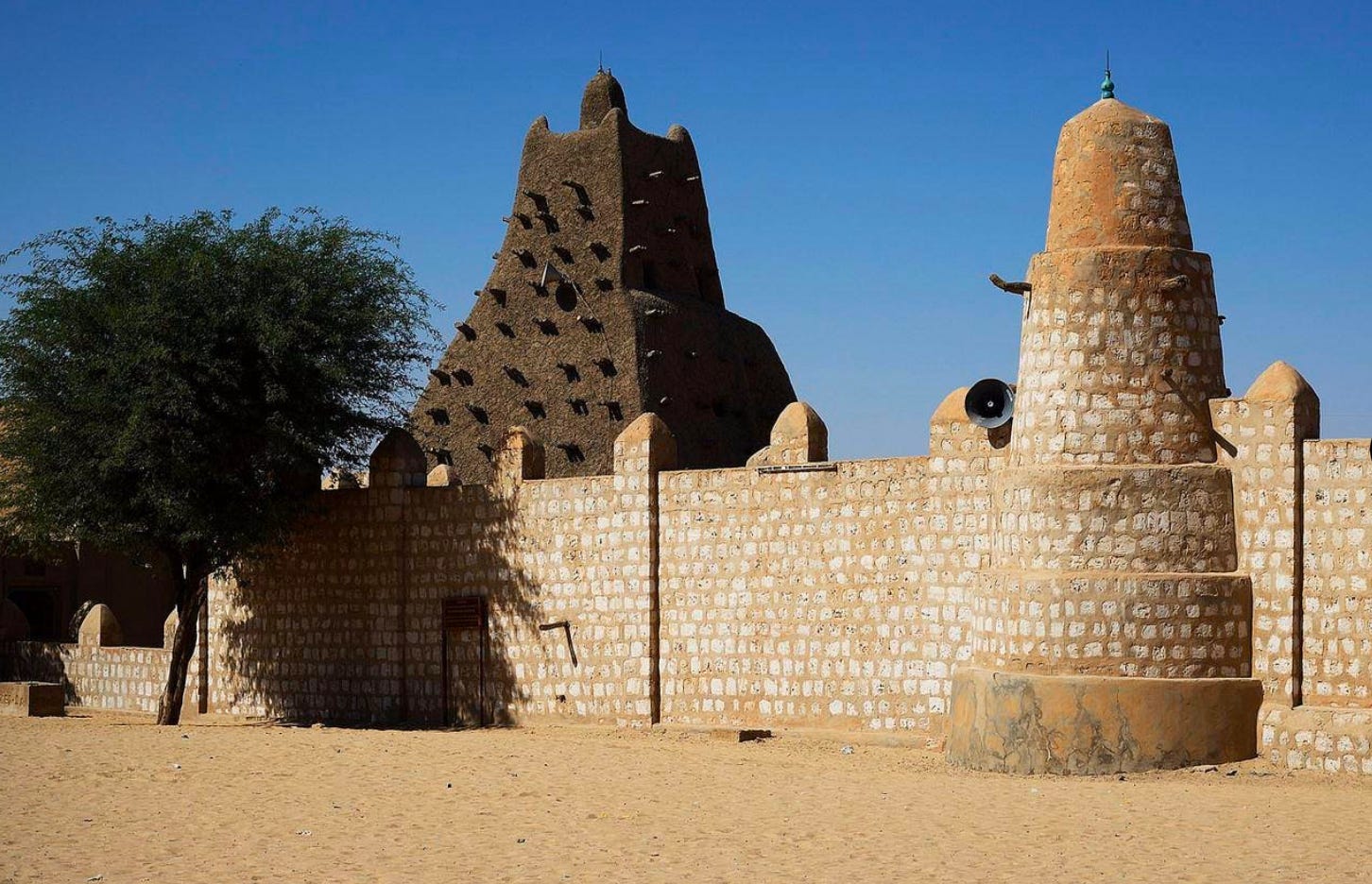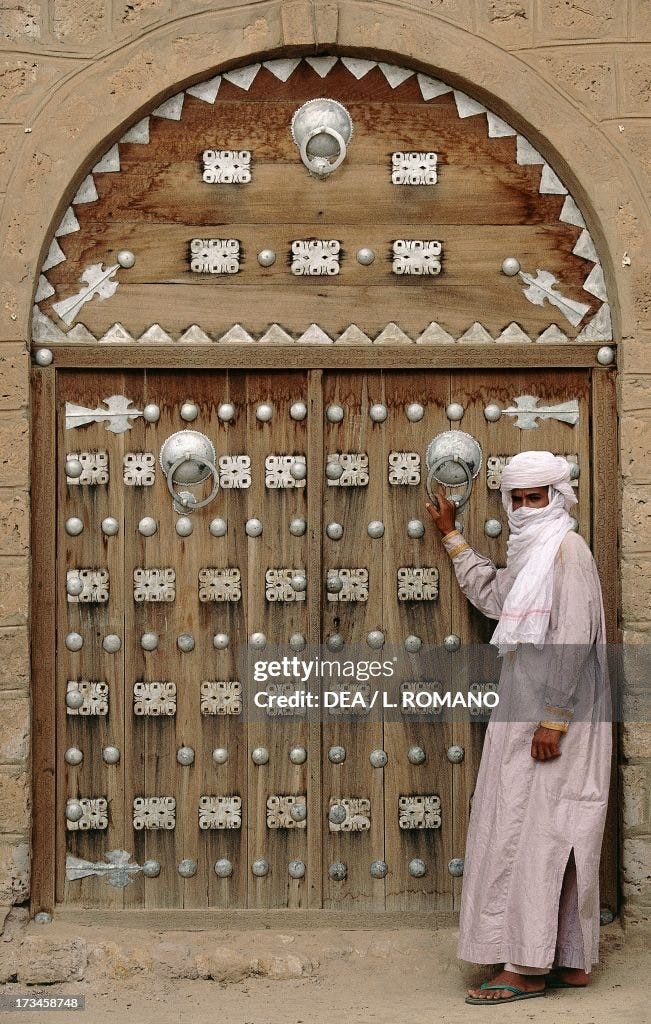December,2024-
While we allowed you to ponder the great architectural skills of the Shona people, let's move ahead in time and head over to the western region of Africa, where we will find Mali. Mali, another great African civilisation, was home to the powerful empire of Mali in the 13th and 14th centuries. Known for its wealth, trade, and scholarship, the Mali Empire was a shining example of African achievement. Its most famous ruler, Mansa Musa, was one of the richest men in history.
Walking down the streets of Timbuktu, you crane your neck to marvel at the magestic mud mosques towering above you. For centuries, these monumental structures have stood tall as places of prayer and learning . but they also hold centuries of stories within their walls. stories of empires rising and falling, of trade caravans traversing the desert, of manuscripts and scholars debating mathematics, astronomy, philosophy, and more. Stepping through the elaborately carved wooden doors takes you on a journey through the golden age of Mali. You'll uncover hidden narratives and legends etched into each mud brick and hand-carved beam. This is the story of Timbukutus magnificent mosques . an epic tale written across the centuries in clay, wood, and stone.
The ancient city of Timbuktu was once a centre of Islamic learning, and its beautiful mud-brick mosques stand as reminders of this golden age. Three of the most known are Djinguereber, Sankore, and Sidi Yahia. These mosques served not only as places of worship, but also as centres of education, attracting scholars from all across the Islamic world. The intricate designs and architectural features of each mosque tell a story of craftsmanship and devotion, showcasing the wealth and intellectual prowess of the Mali Empire. As you walk through the streets of Timbuktu, you can almost hear the echoes of ancient debates and discussions that once filled these sacred spaces, reminding us of the rich history and legacy of this legendary city.
Djingareybar mosque:
This stunning mosque was built in the early 1300s and features a massive minaret towering over 80 feet high. Climb the rickety staircase for panoramic views of the city. It is truly a sight to behold. Completed in 1327, Djingareyber Mosque is the largest mudbrick building in the world.
The fact that this colossal structure has stood for nearly 700 years is a testament to the architectural genius of its builders. The mudbricks were specially engineered to be resistant to wind and rain, while the walls were sloped to allow water to run off and drains installed to prevent flooding.
Beyond its architectural significance, Djingareyber was an important centre for education, attracting students from across West Africa to study law, astronomy, and other sciences. The mosque's library held thousands of manuscripts, many of which have been preserved and are now housed in Timbuktu’s new state-of-the-art library and cultural centre.
Though Djingareyber has endured wars, invasions, and periods of neglect over the centuries, its walls still stand strong. For the people of Timbuktu, this mosque remains a powerful symbol of their city's rich history and enduring spirit. Visiting the Djingareyber Mosque offers a glimpse into Timbuktu's golden age and a chance to appreciate this stunning monument to human achievement, ingenuity, and faith.
Sankore Mosque
Founded in the 1400s, Sankore was Timbuktu's first university and housed over 25,000 students at its peak. Today, you can admire its iconic pyramid-shaped minaret and intricate mud-brick detailing. Don't miss the ancient manuscripts on astronomy, math, and more that are housed in the mosque's library.
Built in the 15th century, it housed one of the first universities in the world. At its peak, the mosque attracted over 25,000 students from all over the Muslim world to study religion, mathematics, and more.
Teachers and students would gather in the large open courtyard shaded by palms to debate ideas, discuss religious texts, and ponder philosophical questions. The cool, arched halls surrounding the courtyard provided space for classes and studying.
Students lived, ate, and slept right within the mosque complex.
The Sankore Mosque was also home to Timbuktu's largest collection of manuscripts, with thousands of handwritten texts on everything from astronomy to poetry. These rare books demonstrate the advanced knowledge and high level of education in Timbuktu at the time. Some of these ancient manuscripts have been preserved and are housed in Timbuktu's new state-of-the-art Ahmad Baba Institute library.
Sidi Yahia Mosque
The smallest yet most ornate mosque, Sidi Yahia, was built in the 1400s in a unique Sudanese architectural style. Its mud-brick walls feature beautiful patterns and calligraphy, with a minaret that resembles a castle turret. Climb to the top for panoramic views of the mosque's unusual design and the city beyond.
The mosques of Timbuktu offer a glimpse into the city's prestigious past as a centre of learning and trade. Their stunning yet humble mud-brick architecture has withstood the test of time, reminding us of the knowledge and craftsmanship of Timbuktu's golden age. The intricate details of the mosque's design showcase the skill and artistry of the craftsmen who built it centuries ago. Visitors can imagine the bustling streets and lively markets that once surrounded the mosque, filled with traders from distant lands exchanging goods and ideas. Standing in the shadow of Sidi Yahia Mosque, one can feel a sense of reverence for the history and culture that permeate the ancient city of Timbuktu.
Now that the journey at Timbuktu has come to an end, we move onto another significant destination, carrying with us the memories of the beauty and grandeur we experienced. As we leave Timbuktu behind, we are filled with a sense of awe and gratitude for the opportunity to witness such a historic and culturally rich place. The legacy of Timbuktu's golden age will forever be etched in our minds, inspiring us to continue exploring and learning about the wonders of the world.
As we conclude our exploration through Africa, it is important to remember the significance of preserving cultural heritage and traditions. Each region we visited allowed us to connect with our heritage, and how powerful our history is.
Thank you for joining us on this exploration of Africa. May we carry the lessons learned with us on our future travels.
Signed ,
F & K










